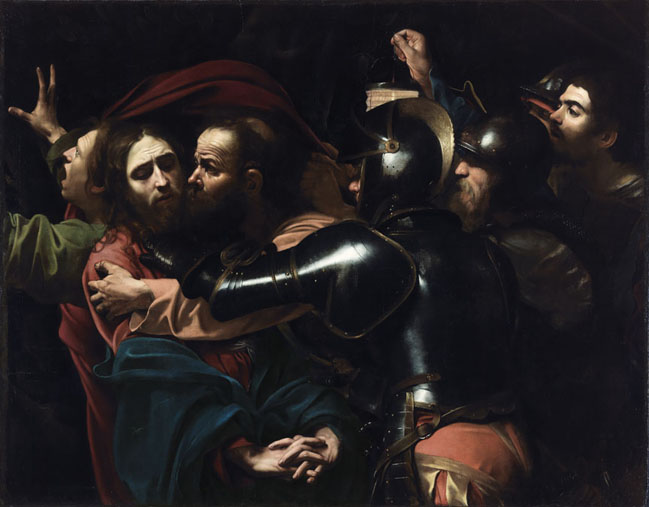
Michelangelo Merisi da Caravaggio led a short but tumultuous life, during which he earned a reputation as the “bad boy” of the art world. Not only did he break many conventions of painting established during the Renaissance, but he was also said to have an absolutely outrageous personality, no more evident than when he killed a man over a spat after a game of tennis. This eccentricity extended to his artwork, which presented viewers with a dynamic outlook on both sacred and secular subjects. Probably best known for his pioneering of chiaroscuro, the dramatic effects of contrasting lights and darks, his work is so powerful that it still manages to leave a major impression on modern viewers, over 400 years after its inception.
With this in mind, the National Gallery’s newest exhibition, Beyond Caravaggio, may come as a bit of a disappointment to some. This was indeed the case for the exhibition’s previous run in the National Gallery London, when upon arrival, visitors discovered that only six of the paintings in the exhibition were attributed to Caravaggio, and the Dublin exhibition features only four. Instead of focusing on Caravaggio’s artwork, it explores the impact that his paintings had in the 50 years following his death. He developed a sort of cult following throughout his career, and the group of painters who sought to emulate him, known as the Caravaggisti, most of whom he never actually met, are the focal point of this exhibition.
It would be a mistake to denigrate the Caravaggisti as mere followers or imitators. They were, in their own right, talented creators of art. They did not directly copy Caravaggio’s paintings, but were influenced by the dramatic nature of his scenes, the stark contrasts of light and shadow and the intense realism of his narratives. The exhibition gives a unique view of a huge variety of 17th-century painting. We are also given the rare opportunity to view Caravaggio’s “Taking of Christ” and “Supper at Emmaus” side by side, which is a treat, as the two used to belong to the same patron but now reside in different countries. However, while I visited the exhibition well aware of it’s make up, I still wished to see a few more of Caravaggio’s works to give me a better sense of how his artwork managed to gain such a dedicated following throughout Europe.
The exhibition is divided between a series of rooms which each focus on the different ways in which his influence manifested itself. Images of taverns and other genre scenes mingle with religious images. At some points, it is very difficult to see any connection with Caravaggio. However, his influence is most definitely evident in the final room of the exhibit, where a series of night scenes evoke his innovative, expressive use of light. Caravaggio never painted an image with a candle in it, in fact the functioning light source is not visible to the viewer in the majority of his paintings. Regardless, a popular theme of Caravaggism was to depict dark candlelit scenes which take after his atmospheric light effects.
While not all names instantly stand out, some major artists are included in the display, such as Guido Reni, Jusepe de Ribera and Artemisia Gentileschi, Gentileschi being one of the most prominent female painters of the era. In Artemisia’s “Susanna and the Elders” it is initially difficult to see a connection with Caravaggio. The canvas is significantly brighter, with vivid colours and a more distinctive background in contrast with Caravaggio’s which are stark and nondescript. It is his realism which was of major importance here as Susanna is preyed upon by two voyeuristic men, struggles to cover herself, tears welling up in her eyes with shock.
It is Caravaggio’s own “Taking of Christ” that proves to be the high point of the exhibition, a painting which is exemplary of all of his most coveted traits. The image is charged with emotion, depicting the exact moment that Judas betrays Christ to the Roman authorities, and the intensely dark painting is further dramatised by its dynamic composition which is almost claustrophobic. With six figures placed within the confines of the canvas, one can almost feel the momentum of the soldiers pouncing on Christ from the right of the canvas. His ability to capture the nuances of the human condition combined with the high drama of the baroque captured the imagination of the Caravaggisti. However, despite his limited presence in this display, it is Caravaggio who shines.






